Social Responsibility: How to Build a Socially Conscious Brand
Corporate social responsibility is dead in the traditional sense. Not because no one cares anymore, but because the field has been transformed into something entirely different now.
The TED speaker, Rachel Hutchisson, explains the details of this transformation.
Turns out the focus on corporate is extremely limiting, and CSR is taking a form of community or human social responsibility. But how did this transformation come about?
Well, we no longer rely on organizations to tell us what to do and which standards to follow. We go online, research, read reviews and make informed decisions without getting anyone else involved but our own judgment. Social responsibility turned into a conversation where businesses and customers are equal.
As a result, brands are struggling. If you too don’t know where to go from here, have a look at our Brand Audit service, that will provide a thorough examination of brand’s current position in the market and determine opportunities for improvement, including those in the social responsibility field. A Brand Audit will help enrich your brand with purpose so that it can stand out in the turbulent market.
Related: Purposeful Brands: Why Customers Are Prepared to Pay More
How Corporate Social Responsibility Has Changed
The Internet opened up many opportunities for education and connected people on so many levels. We stopped seeing big businesses as the only entities that can affect social issues. In the world of connectivity, everyone has the power to make an impact.
The engagement with social issues has gone up, so that’s a huge plus. But, this also means that businesses are subjected to critical scrutiny. Now that the people are deeply involved, they expect every business, large or small, to join the conversation in a responsible and sustainable manner.
This rings especially true for the Millennials and Generation Z. Studies show that 80% of millennials [1] expect companies to make a public commitment to good corporate citizenship.
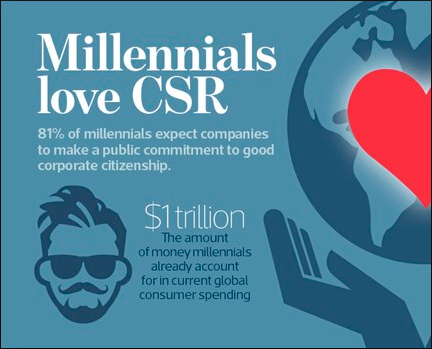
Image via The Chartered Institute of Marketing
What does it all mean for businesses? It is increasingly important for brands not only to be socially responsible but also to choose the right social mission and employ the right marketing tactics.
But don’t get too worried about implications and expenses. There are a plethora of benefits too.
Benefits of Building a Socially Responsible Brand
Of course, every business owner sees social responsibility from a profit-making angle. But watch this video from TED. The speaker, Alex Edmans, claims that businesses can both do good and do well. According to the speaker, social responsibility is not a way to drive profits but a way to do good for society while profits will come naturally.
Here are some other benefits of having a social purpose brand:
- Added benefit when seeking investor funding
When seeking investors, you have to tell a larger brand story. Investors favour ideas with an added twist.
They also understand that it takes more than a great idea to keep the company together. The ability to retain human capital and form mutually beneficial relationships with society are all taken into account.
Related: Brand Stories: 5 Compelling Examples That Sell Themselves
- Competitive advantage
Consumers are socially conscious and are looking for brands that share the same mindset. The faster you are to adopt this mindset the more chances for your brand to be chosen over other brands.
Social responsibility elevates the brand to a new level, leaving all everyone else behind.
- Premium positioning and pricing
Customers don’t mind paying an increased price because subconsciously everyone understands that social responsibility means expenses.
Psychologically it makes people feel good when they contribute to society, so knowing that a brand is socially responsible puts people at ease with a lofty price tag.
- Increased brand loyalty
Even though customers do jump from one brand to another in search for better products, recent research by Facebook[2] confirms that brand loyalty is alive and well.
Related: Brand Loyalty: 5 Key Steps to Building Your Loyal Fan Base
Loyalty is built on emotions, and is there a stronger emotion driver than the future of humanity? Brands that manage to establish a deep connection between their social initiatives and their customer base, enjoy unwavering brand loyalty.
- Stronger corporate culture
To understand a corporate culture in relation to branding check out this video from Sasha Strauss on what brand alignment is and why it’s important for employees to believe in your brand and your company.
It’s a known fact that people find meaning in jobs that focus on craftsmanship, kinship or service[3].
Socially responsible organizations can greatly benefit from this finding, by emphasizing the impact the company makes in their internal communication and thus providing employees with additional, powerful source of inspiration.
Related: The Age Of Internal Branding And Selling It From The Inside Out
Visually all the benefits of social responsibility can be presented by the virtuous circle business model.
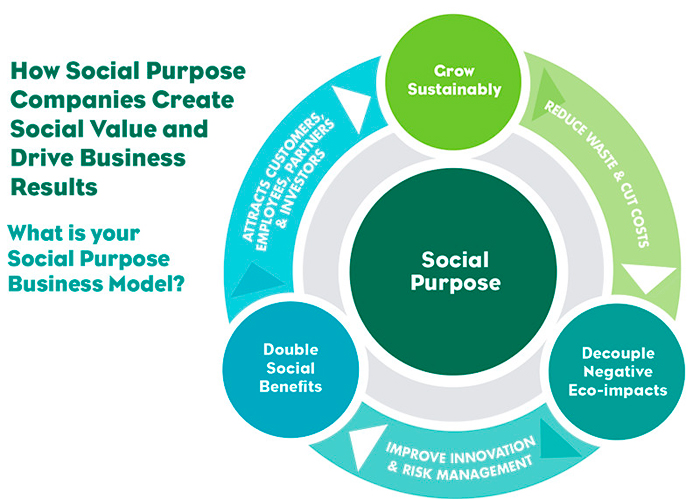
Image via Sustainable Brands
How to Create a Socially Conscious Brand
Before you embark on a mission of building a socially responsible brand, there are certain basics that need to be discussed. In particular, the models of socially responsible brands. These models are fluid concepts rather than strict guidelines.
Related: 4 Reasons Why Your Business Profit Starts With Your Brand Mission
4 Models of Socially Responsible Brands
Model 1. Social purpose as the core of a brand
Patagonia brand always advertised itself as a fair working conditions company with environmentally friendly production processes. Their business model is based on socially conscious practices.
If the brand suddenly decides to move their production to cheaper factories in the far-flung corners of China, it would undermine the very essence of a brand.
This model can be defined as “social purpose is what we do”.
Model 2. Social purpose as legitimacy
Business is an indispensable part of a society. When the business enters the market, it agrees to operate according to social expectations.
The expectations for businesses are pretty much the same as for people – do no harm, abide by the laws and contribute to the community.
Brands that build skate parks, plant tree line alleys in the city parks, create art installations[4] in the city squares follow their social contract.
This model can be defined as “social purpose is how we’re expected to act”.
Model 3. Social purpose as a way to reach business goals
Companies worldwide have incorporated social purpose into their brand narrative to boost sales.
Related: Brand Story: The Key Ingredients to What Makes It Compelling
This model doesn’t have to have a negative connotation. People buy Macbook because it’s the best computer on the market, not because of the company’s commitment to carbon emission program. But the company’s social mission gives people a peace of mind.
This model can be defined as “social purpose is what we do to be successful”.
Model 4. Social purpose as a separate brand narrative
Companies operating in medical, social and education fields don’t have to do much to communicate their commitment to society. These brands have social mission infused in who they are.
This model can be defined as “social purpose is who we are”.
Now, let’s explore the exact process to create a socially responsible brand
Socially Responsible Brand Creation Process
Step 1. Choose the right social need
For businesses that are just starting their social responsibility quest, it helps to explore different ideas and get a bit creative before they land on one or two social causes to support. Usually, these ideas are restricted by the three realms: brand history, customers, and product[5].
To identify your social need first look at all three realms and list every single cause that comes to mind. Then score each cause from the brand, consumer and business perspectives.
The social need that emerges based on this analysis, will, ideally, lie on the convergence of all three realms.
In the brand audit process, we evaluate where and how to develop your brand’s social responsibility strategy and how to seamlessly incorporate it into your brand narrative.
For brands that prefer to do a brand audit internally, our brand audit health check programme, the Auditing Analysis Accelerator™, provides a simple but highly effective framework for identifying brand weaknesses, strength and opportunities so that you can easily create a powerful narrative that attracts the target audience. Find out more here and watch here of how to give your brand a health check yourself.
Step 2. Incorporate social purpose into the brand narrative
It’s important to tie the social purpose with the brand narrative. Without a clear statement of what your company does and why social purpose doesn’t bring any value.
Related: Brand Stories: Critical to Brand Growth Strategy
Here are some ways you can incorporate social purpose into a new or existing brand story:
Buy-one-give-one
A great example of a carefully crafted buy-one-give-one narrative is TOMS brand. For every pair of slippers sold the company donates another pair to a person in need.
This type of brand narrative employs customer engagement to the fullest. People will always need a new pair of slippers and if they can help someone while they shop, they will.
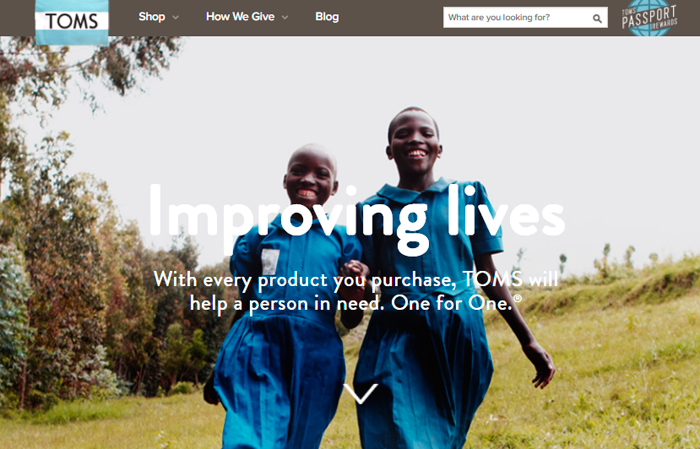
This concept works for smaller brands too. It allows for many interpretations. For example, if you have a product that gets manufactured in the local community, people who buy your product, end up supporting the craftsmen who made it. You don’t have to give out part of the profit to apply a buy-one-give-one narrative. If the product creates jobs, it already has a social connotation.
This is exactly how Pura Vida owners have built their brand narrative. When you buy a bracelet from Pura Vida, an artisan in Guatemala can buy a dinner for his family.
Socially responsible business model
A great example of a small sustainable business is Everlane. The brand initially started as an environmentally friendly brand with transparent manufacturing processes and fair prices.
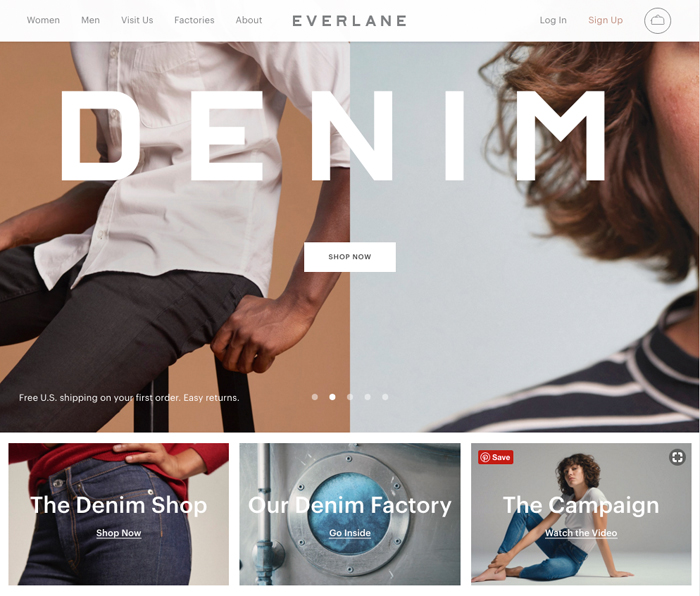
Social sustainability is at the heart of their business, this is what the brand has become known for.
Everlane example shows how to take a social issue that the industry has been talking about for ages and create a business that makes a real impact.
Even though Everlane is a small business and they don’t own thousands of factories to affect the state of the fashion industry, their initiative has started a conversation. And in the age of a social media, conversations spread like a fire.
Changes in the operational model
You might not have a material product that affects the society. But the way you do business impacts others.
Sacramento Event Planners is a small event planning agency, that specializes in the so-called greening events. The company promises the best event ever, but the impact of the event on the environment will be minimal.

Image via Sacramento Event Planners
Analyze your business and the way you conduct operations and see if you can alter some processes to negate the impact. For example, going paperless and saving energy in the office might not be important to your consumers, but when you apply those exact policies in a retail store, the effect is a lot more visible.
Employee volunteerism
When a Walmart employee volunteers for at least 25 hours with a non-for-profit Walmart gives such an organization a $250 grant.
It’s a carefully crafted multi-dimensional program that provides benefits to everyone involved: employees can explore their passions through volunteerism, nonprofit organizations get a financial boost, and Walmart actively advertises its commitment to the community.
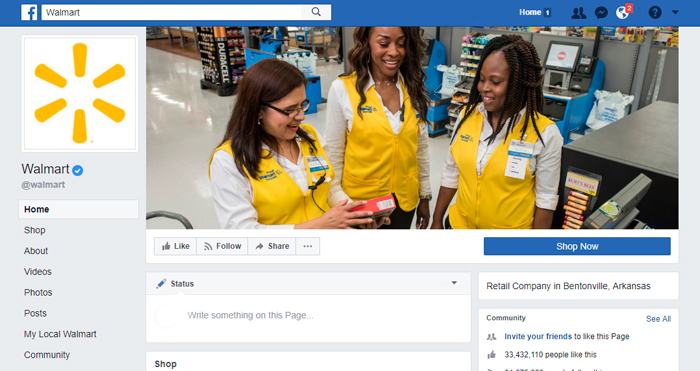
On a smaller scale, giving a day off to employees so that they can plant trees in the nearest park works the same way. Your team members will be grateful for a change of scenery, whilst the community with benefit from the beautiful greenery. Have a branded T-shirts ready and take lots of pictures and your brand will get the recognition it deserves.
Being a social influencer
Last year the Institute of Code ran a contest on social media that encouraged all women and girls to apply for programming scholarship at the Institute. The company is based in Bali and the campaign generated lots of hype online.
The contest immediately associated the brand with a female empowerment movement and proved that even small businesses can use social issues to drive awareness.
Related: Branding for Women: Why Women are Redefining Brands and Branding
Educating on old vs new
Even though Tesla brand doesn’t run active social responsibility campaigns, it continuously educates consumers on the environmental benefits of using a clean source of energy. For example, in 2015 the company owner announced that he would open-source Tesla’s intellectual property so that everyone could follow Tesla’s vision of a clean future.
Tesla doesn’t have to make much effort in social responsibility. After all, the company produces the cleanest car on the planet. But business owners who are trying to improve on the old, no matter if it’s a slight improvement or a dramatic overturn, can employ similar tactics to inform and educate their consumers.
Offset business’s negative impact:
For an airline, carbon emission and fuel efficiency are the main concerns. Virgin Atlantic invests in a modern fleet, educates its captains on ways to improve fuel efficiency and offers customers an option to offset their carbon.
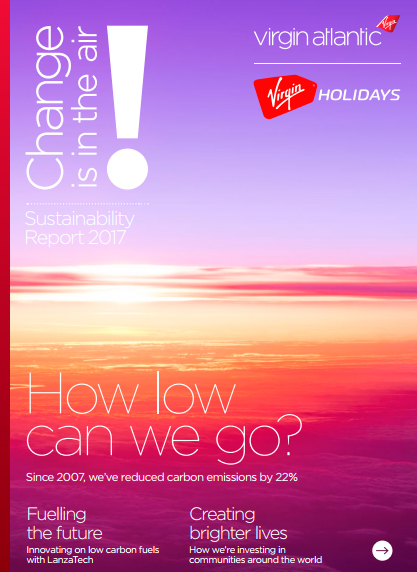
Image via Virgin Atlantic
Everyone is somehow affecting the world around us, be it the environment or people: we drive cars and transport goods, wash the dishes and produce lots of waste.
As a small business owner, you can choose the cause your business affects most and devise a way to make the impact less severe.
For example, for delivery businesses, the effect of transportation on the environment can be huge but put a little more thought to route planning and you’ll save the planet a couple of years.
Step 3. Show the proof to the audience
There is no use in social purpose if you don’t communicate it. Even communication might not be enough.
While the older generation might accept social responsibility message as a stated fact, Millennials and Generation Z expect brands to show the proof and deep knowledge[6] about the issues.
People will only reward brands who manage to show full transparency and authenticity.
Here are some ways you can show the proof:
- Online marketing
- Events around the issue
- Social Media campaigns
- Employee advocacy
- Updating the news section on the website
Standing Out In The Crowded Social Space
As we move towards a fully connected world, more companies will be adopting a social mission, making it less of a competitive advantage and more of the must-have element of branding.
However, experts agree that social responsibility is here to stay. It might be getting more conversational, we might expect more engagement and actual real impact from brands, but we still view socially responsible brands more favourably. And the first key to building a socially conscious company is a sound and clear brand strategy.
If you’d like to make social responsibility an integral part of your brand and how you do business then a brand audit, with that objective in mind, will help you evaluate where and how to develop your brand’s social responsibility strategy from the very start. A professional brand audit helps identify areas of weakness, strength and potential opportunities for innovation.
You can give your brand a health check yourself using our brand audit health check programme, the Auditing Analysis Accelerator™. Find out more here and watch here of how to give your brand a health check yourself.

Audit your brand now so you can identify where and how to make social responsibility part of your brand ethos
Want to find out more?
Alternatively, if you’d like professional input and direction for building your brand and would like to leverage our experience and expertise then send us an email to [email protected] or give us a ring T: +353 1 8322724 (GMT hours 9:00 – 17:00). We’d be very happy to speak with you.
Questions to consider
- Would you pay a premium price for a socially conscious brand?
- What social causes feel natural for your business?
- Can you tie in your brand purpose with a social mission?
- What are the ways to incorporate a social purpose in business? Can you see how any one of these applies to you?
[1] https://www.forbes.com/sites/larissafaw/2014/05/22/millennials-expect-more-than-good-products-services-to-win-their-loyalty/
[2] https://www.facebook.com/iq/articles/modern-loyalty-love-in-a-time-of-infinite-choice?ref=wpinsights_rd
[3] http://www.apa.org/monitor/2013/12/job-satisfaction.aspx
[4] https://www.theatlantic.com/business/archive/2017/03/fearless-girl-wall-street/519393/
[5] https://hbr.org/2017/09/competing-on-social-purpose#comment-section
[6] http://www.millennialmarketing.com/2017/01/show-me-says-gen-z-pivotals-want-proof/

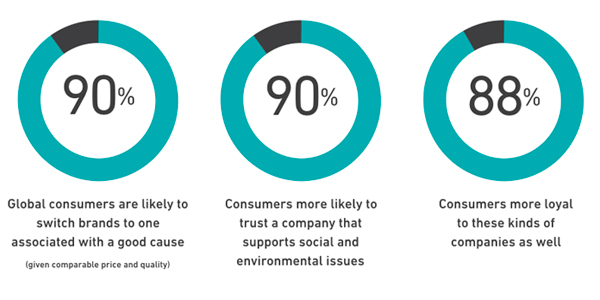



Leave a Reply
Want to join the discussion?Feel free to contribute!